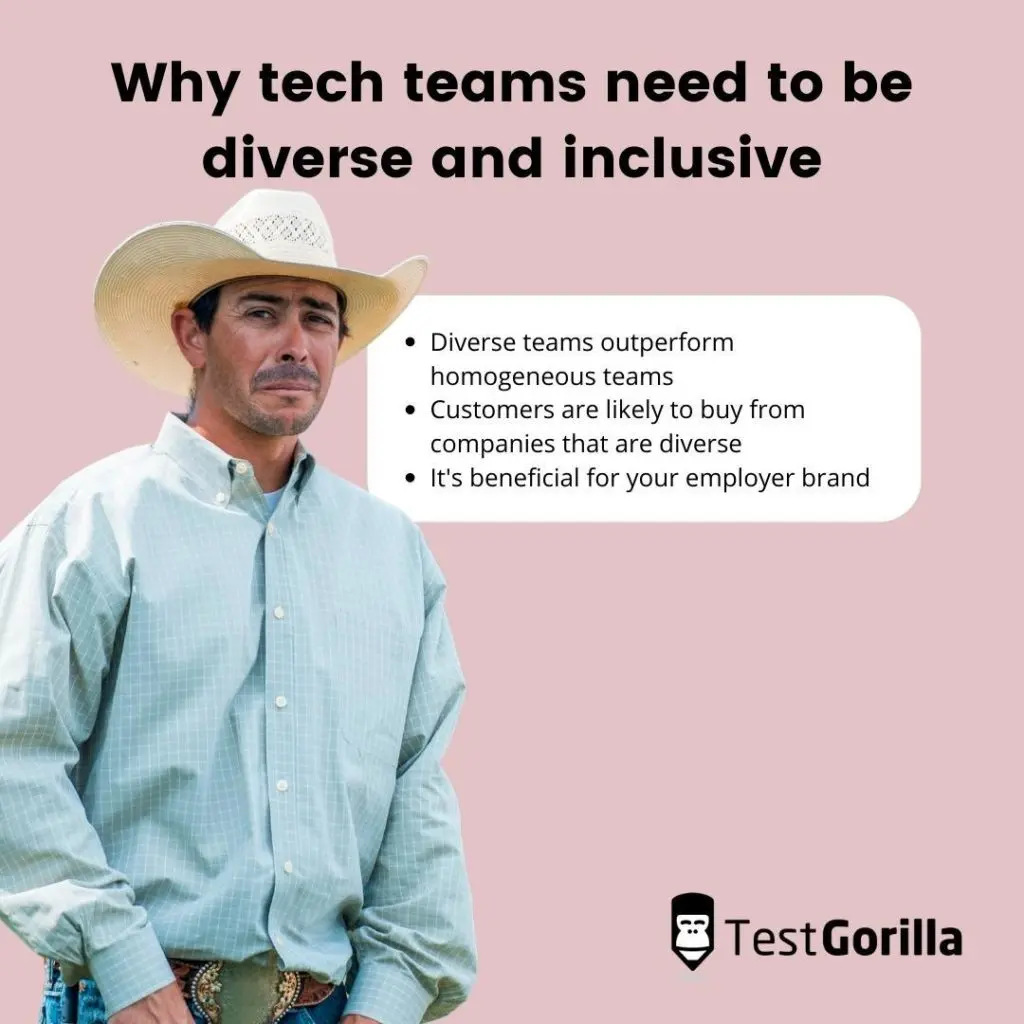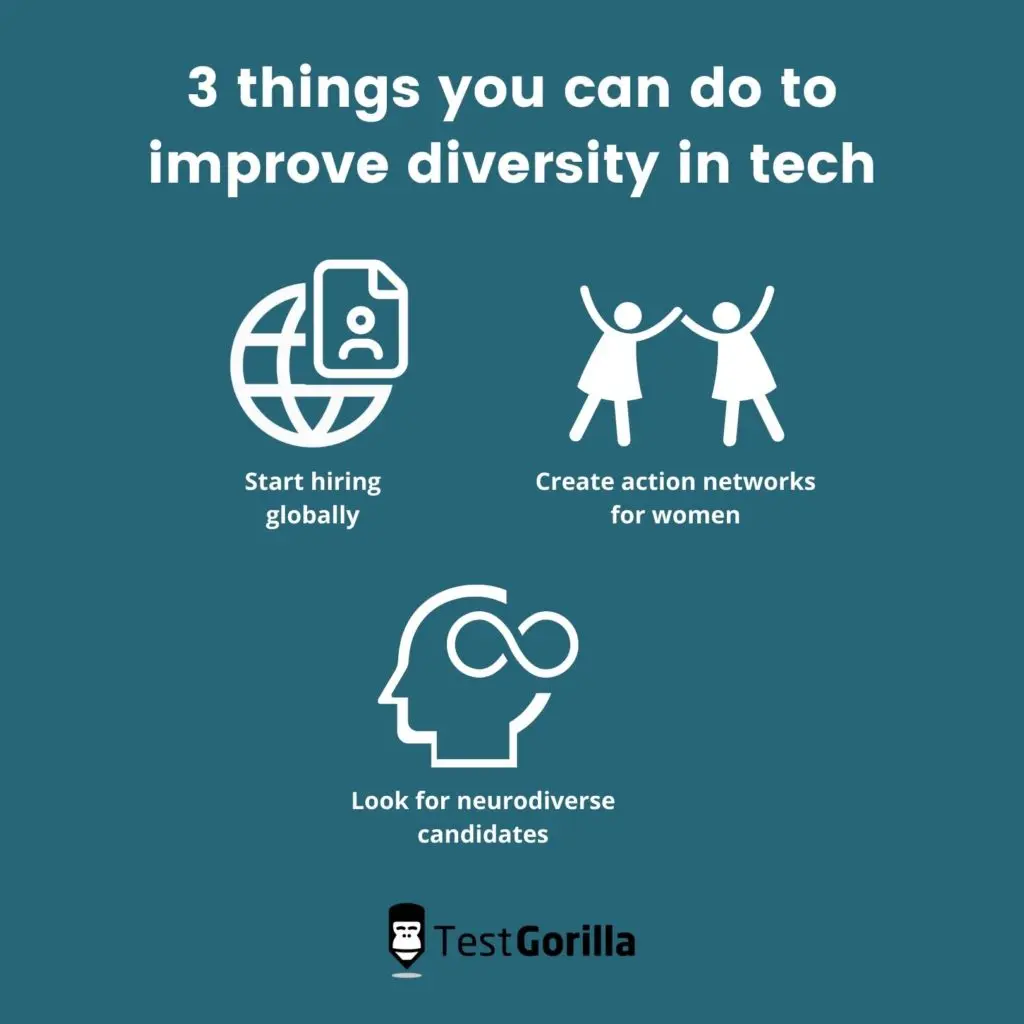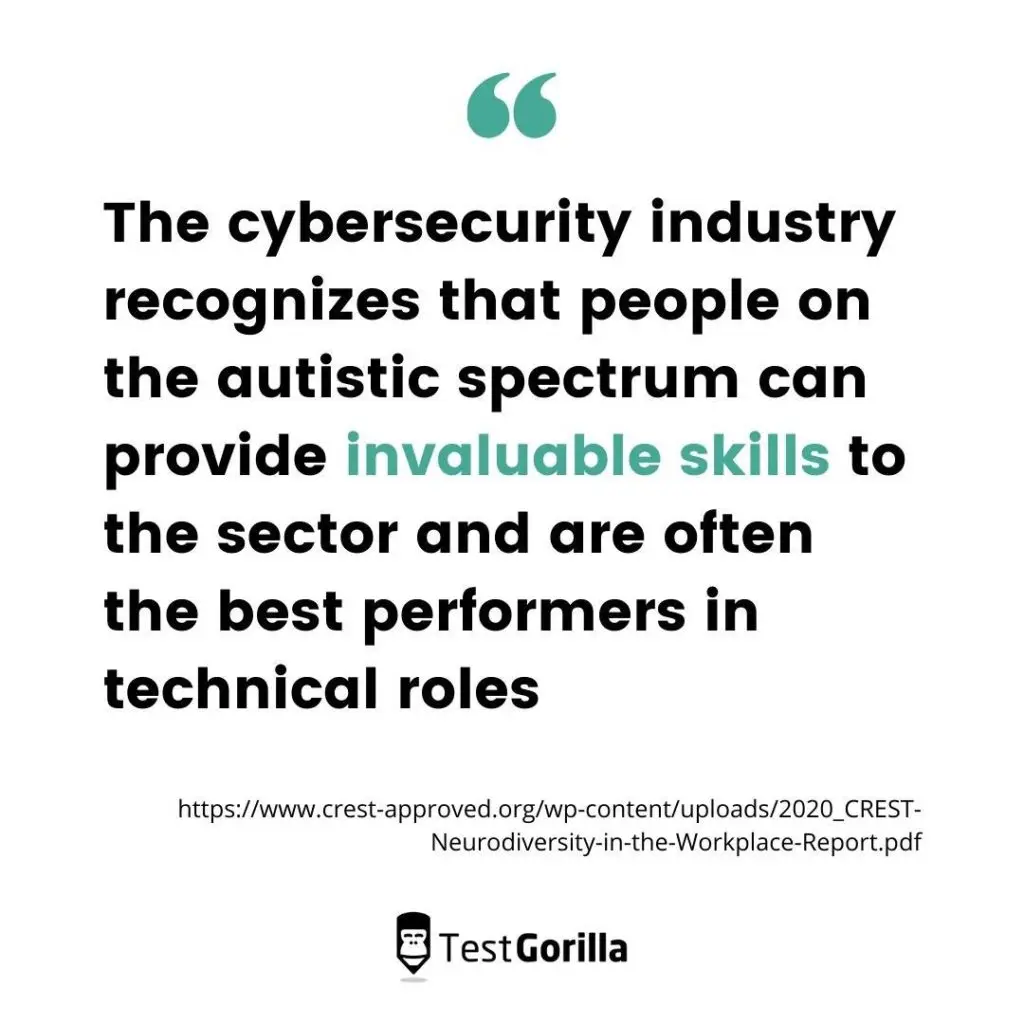Table of contents
Diversity and inclusion were once terms thrown around like buzzwords, but they have become industry standard in the last couple of years. Recruiters across industries and fields have set ambitious diversity goals when hiring for their teams.
And they’re doing it for more than just inclusion — diverse teams are more successful than homogenous teams. So HR managers are actively looking for ways to improve diversity in their teams, including in the IT industry and their tech teams.
But did you know that tech is one of the least diverse industries out there? With this in mind, let’s look at how you can improve diversity in your tech teams, what platforms you should use to enhance diversity, and why tech teams need to be more diverse.
But first, let’s check out the current state of diversity in tech teams.
The current state of diversity in tech teams
The IT industry is picking up on diversity and inclusion standards, which are slowly becoming the norm. It’s still far from perfect, but progress is being made.
The following diversity in tech 2021 U.S. report shows the data on the current state of diversity in tech teams:
51% of managers said that they struggle to recruit diverse entry-level employees. The problem isn’t as bad for mid-level (34%) and senior (28%) positions.
Around 20% stated that they hire graduates only from the top colleges.
68% of businesses are aware that there’s a problem with diversity in their tech teams (or rather, a lack thereof).
Out of that 68%, around half (46%) are actively working on solving the issue, while 51% have diversity goals and targets in place.
11% of businesses said that they don’t have a diversity and inclusion strategy in place at all.
And almost a fifth (18%) of the surveyed employers stated that they received complaints from their current or former employees about diversity and inclusion in their teams and companies.
As we can see, the current state isn’t where it needs to be. Many tech teams need to work on diversity, and there’s a good reason for that.
Why tech teams need to be diverse and inclusive
There are three main reasons why team teams need to be diverse and inclusive:
1. Diverse teams outperform homogeneous teams
Diverse teams provide better results than homogenous teams. There are four kinds of activities for which a diverse team will fare better:
Launching a new product. Companies with diverse teams are more likely to develop new product innovations.
Troubleshooting an existing product. Diverse teams are more likely to find errors and problems.
Planning for the future. Diverse teams don’t easily fall into “groupthink” because they scrutinize proposals and ideas from members of different backgrounds in detail. This leads to more conflict but makes the team less likely to make errors.
Responding to crisis situations. Diverse teams have different mindsets and mentalities, so they look at the problem from different perspectives. Therefore, they come up with solutions faster.
Diverse teams ask team members to think more deeply about ideas, topics, and products, and they question the facts more objectively than homogenous teams. They don’t take things for granted but present their perspectives and question the status quo through discussions.
2. Customers are likely to buy from diverse companies
According to market research, around 64% of consumers may buy a product immediately after seeing the commercial if the brand embodies diversity and inclusion.
The same research concludes that two-thirds of people (67%) are somewhat likely to make a second purchase if they believe the brand is committed to diversity and inclusion.
These numbers differ slightly between age groups (73% of those aged 18-34 were likely to make a second purchase vs. 61% of people above 55 years of age). So, while diversity also matters to older generations, young people are far more likely to buy from brands they consider diverse, and they’re the ones slowly taking over the workforce.
In other words, tech teams need to be diverse, and the brand needs to double down on diversity and inclusion if they want customers to buy (and keep buying) from their company.
3. It’s beneficial for your employer brand (more candidates want to work in diverse workplaces)
Last but not least, diversity is beneficial for the employer brand. More and more candidates entering the workforce demand diversity and inclusion as standard practice in their workplace.
So a company championing diversity in tech teams will draw in lots of diverse talent from talent pools. There are problems with the “bro culture,” especially in tech teams, so diverse and inclusive companies in the IT field will receive many applications.
3 things you can do to improve diversity in tech teams
There are three things you can start doing to improve diversity in your tech teams:
1. Start hiring globally
The first step is expanding your talent pool and hiring global talent. With the pandemic, many organizations have moved their operations online, so the global barriers have ceased to matter… or so it seems.
A company should start looking not only at the diverse talent in their country of operation but also abroad. For example, there’s a lot of untapped potential lying in Eastern Europe and Southeast Asia.
When it comes to hiring globally, you should:
Look for culture add. The talent elsewhere will be pretty different racially, ethnically, and culturally. Look at candidates’ value sets and how they can contribute to your company’s culture besides their excellent tech skills.
Find the right channels. This means going above and beyond to find the places where tech talent gathers. Find their “fishing ponds,” and make sure you set the right expectations.
Be flexible with your requirements. You’re searching for tech talent with the necessary skills to do the job, but some of that talent won’t have the supporting qualifications for the position, like a college degree. Make sure you don’t miss out on great talent by having non-essentials in the job description.
2. Create action networks for women
Let’s take a look at Cisco’s example for this. They demonstrate a strong push for women in tech called “women’s action network,” and it has thousands of members all across the globe.
They conducted a study to discover how many science and technology degrees graduates were women, and the numbers weren’t promising:
21% in India
28% in Japan
16% in Australia
35% in the U.S.
30% in Europe
Given this situation, Cisco started collaborating with organizations across the globe to include as many women as possible in their tech teams. They formed a global inclusion and diversity council to ensure all their offices follow the inclusion and diversity business processes.
What you can do in your office is create action networks across different teams and verticals in which managers and leaders uphold the diversity and inclusion processes in their respective teams.
3. Look for neurodiverse candidates
One more thing you can do to improve diversity in tech teams is to hire neurodiverse candidates. In 2017, the unemployment rate of people with autism was around 85%. There’s a lot of untapped potential in that talent pool.
While some people with Asperger’s syndrome or on the autism spectrum may find it more difficult to socialize with their coworkers, they can still be invaluable to the company, especially when it comes to technology jobs.
Pattern spotting, attention to detail, the ability to focus on a single issue for an extended period, and problem-solving are just some of the many skills neurodiverse candidates may possess.
A 2020 Neurodiversity report said, “The cybersecurity industry recognizes that people on the autistic spectrum can provide invaluable skills to the sector and are often the best performers in technical roles.”
There’s even an entire team of neurodiverse people working in the Israeli army, in the “Visual Intelligence Division.” Their job is to scan high-resolution satellite images for suspicious movement or objects.
There are a few things you can do to prepare your workplace for neurodiverse talent:
Remove barriers for neurodiverse talent from your application process
Make neurodiverse talent feel welcomed in your organization
Expect (and prepare for) socially different cues from neurodivergent candidates
Adjust your interview process to accommodate neurodiverse candidates
Why you should use TestGorilla to improve diversity in tech teams
Diversity in tech teams matters, and you should carefully decide how you’ll implement your organization’s diversity and inclusion processes. Here are three reasons you should choose TestGorilla to improve diversity in your tech teams:
1. Bias-free scoring
TestGorilla candidate assessment software provides bias-free scoring. With our assessment software, you’ll receive candidate ratings that are objective, quantifiable (numerical), and free from bias.
The tests candidates receive will be the same, and they’ll be evaluated objectively on the same scale, so you’ll be able to compare candidates’ results easily. This ensures that you eliminate unconscious bias when hiring people for tech roles in your team.
2. Scientifically-based pre-employment tests made by a subject matter expert
Every test in our test library has been created by a subject-matter expert with years of experience in the relevant field. But that’s not the only measure we take to ensure the highest quality.
We ask another subject-matter expert from the relevant industry to assess and evaluate the test, providing valuable input on making any improvements.
The test subsequently goes through multiple rounds of iteration and feedback, field-tested, and only then do we upload the test onto our test library. So when you give your candidates a test from our test library, they get a version that’s close to perfect.
3. Video response option
Our platform is highly customizable and gives you the option to request video responses.
Asking candidates to submit responses in a video format can be really useful for recruiters and HR managers to assess candidates’ body language, presence, vocabulary, and how they conduct themselves on camera.
A video response option is great when assessing the communication skills of candidates for your tech teams, especially for diverse teams that spend time discussing ideas, perspectives, and products. So you’ll need candidates who have good communication skills.
Diversity in tech teams matters, and companies should push for it
Diversity and inclusion are becoming standard for today’s workplace. Gen Z is demanding that businesses employ people from different ethnic, religious, racial, and sexual backgrounds in their workplace.
And we’ve seen the case for diversity in tech teams: they’re better than homogenous teams when it comes to profitability and productivity, they launch more products, they innovate faster, and they respond to crises better, faster, and more accurately than homogenous teams.
Ready to increase diversity in tech teams at your company?
Get started with TestGorilla today, and start making better hiring decisions, faster and bias-free.
Related posts
Hire the best candidates with TestGorilla
Create pre-employment assessments in minutes to screen candidates, save time, and hire the best talent.
Latest posts
The best advice in pre-employment testing, in your inbox.
No spam. Unsubscribe at any time.

Hire the best. No bias. No stress.
Our screening tests identify the best candidates and make your hiring decisions faster, easier, and bias-free.
Free resources
This checklist covers key features you should look for when choosing a skills testing platform
This resource will help you develop an onboarding checklist for new hires.
How to assess your candidates' attention to detail.
Learn how to get human resources certified through HRCI or SHRM.
Learn how you can improve the level of talent at your company.
Learn how CapitalT reduced hiring bias with online skills assessments.
Learn how to make the resume process more efficient and more effective.
Improve your hiring strategy with these 7 critical recruitment metrics.
Learn how Sukhi decreased time spent reviewing resumes by 83%!
Hire more efficiently with these hacks that 99% of recruiters aren't using.
Make a business case for diversity and inclusion initiatives with this data.




















